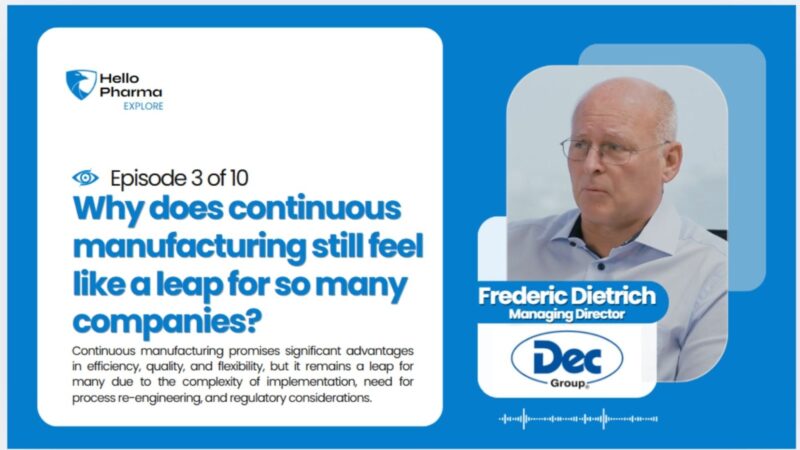Continuous manufacturing represents a significant shift in pharmaceutical and chemical production, promising greater efficiency, reduced variability, and faster time to market. Yet despite these compelling benefits, many companies find that implementing continuous processes still feels like a major challenge.
In this episode, Mr Frederic Dietrich, Managing Director of Dec Group, joins us to explore the complexities and opportunities surrounding continuous manufacturing. We begin by framing the technological and operational differences between traditional batch manufacturing and continuous production. While batch processes have long dominated the industry due to their flexibility and familiarity, continuous approaches offer consistent product quality, real-time control, and a more streamlined supply chain.
However, transitioning from batch to continuous manufacturing involves more than adopting new equipment. Mr Dietrich discusses how companies must rethink their entire process architecture, from raw material handling and powder transfer to in-line monitoring and final product packaging. This shift requires careful alignment of equipment, control systems, and data infrastructure to ensure seamless, uninterrupted production.
One of the main barriers companies face is the integration of upstream and downstream processes. Achieving true continuous flow means overcoming challenges in powder feeding, blending, granulation, and drying, as well as maintaining consistent environmental conditions. Containment and safety requirements add another layer of complexity, particularly when working with highly potent or sensitive materials.
Mr Dietrich highlights how modern containment and transfer technologies are helping address these hurdles. By providing reliable and safe powder transfer systems that can operate under continuous conditions, manufacturers can minimize exposure risks and maintain product integrity throughout the process. Containment solutions that adapt to continuous flow also play a critical role in meeting regulatory requirements and ensuring product safety.
The episode also explores how digital infrastructure is becoming increasingly essential to enable real-time monitoring and control. Process Analytical Technology (PAT), sensors, and data analytics support the shift to continuous manufacturing by providing immediate feedback on critical process parameters. This real-time insight allows manufacturers to make adjustments on the fly, reducing variability and ensuring product quality.
Mr Dietrich shares perspectives on how industry mindsets are evolving as well. While continuous manufacturing may seem daunting at first, companies that invest in pilot projects and demonstration lines can build confidence in these approaches. By leveraging collaborative engineering and robust testing, they can move from feasibility studies to commercial production more smoothly.
Looking ahead, continuous manufacturing is set to play a pivotal role in next-generation pharmaceutical and chemical production. As the industry continues to demand faster development cycles and more robust supply chains, continuous processes will offer a sustainable path forward.
Join us as we unpack the drivers, barriers, and future outlook for continuous manufacturing, setting the stage for a deeper exploration of specific technologies and best practices in upcoming episodes.
For more insights and content on the latest pharmaceutical and processing technologies, visit www.hello-pharma.com.






